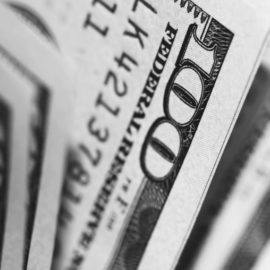

This article is an excerpt from the Shortform book guide to "Confidence Man" by Maggie Haberman. Shortform has the world's best summaries and analyses of books you should be reading.
Like this article? Sign up for a free trial here.
What was former President Trump’s COVID response? How did he handle the pandemic?
When looking at Trump and COVID, his response was initially marked by denial and animosity with public health leaders. However, his administration did ultimately enact the CARES Act, a fiscal stimulus bill to support Americans during the crisis.
Learn more about Trump’s response to COVID by reading on.
The Covid-19 Crisis and Trump’s Response
The emergence of the Covid-19 pandemic in February 2020 marked a turning point in the Trump administration. Although the pandemic was a major national crisis that called for decisive leadership, Trump couldn’t help but see the unfolding and lethal situation only in terms of how it harmed him. Looking at Trump and COVID, you can see a lot of animosity between him and the experts warning the country about the virus. He grew angry at the Centers for Disease Control (CDC) and other officials for warning about the spreading pandemic. Instead, he implored officials in his administration to tamp down public warnings and discussions of it—even as the infection rate and death toll began to climb.
| The Transformative Impact of the CARES Act Although many characterize Trump’s response to the pandemic as deluded, incompetent, and callous, his administration and Congress did enact a swift and impactful legislative response to the crisis. The Coronavirus Aid, Relief, and Economic Security Act (CARES Act), signed into law by Trump in March 2020, was a $2 trillion aid package designed to deal with the economic fallout of the pandemic. Even some progressive journalists called it the most sweeping fiscal stimulus bill in American history, surpassing Obama’s 2009 stimulus bill and even FDR’s New Deal. Among its many provisions, the CARES Act marked a significant departure from traditional unemployment benefits by providing an extra $600 per week on top of existing state benefits—providing substantial support to those who lost their jobs. The bill also established the Paycheck Protection Program, which provided forgivable loans to small businesses to help keep furloughed employees on the payroll. The impact of the legislation was substantial. In April 2020 immediately after the bill’s passage, personal income in the US experienced a 10.5% growth, marking the highest monthly rate in the metric’s 60-year history. This occurred amidst a significant rise in unemployment, which soared from 4.4 to 14.7% in the same month. |

———End of Preview———
Like what you just read? Read the rest of the world's best book summary and analysis of Maggie Haberman's "Confidence Man" at Shortform.
Here's what you'll find in our full Confidence Man summary:
- How Donald Trump's NYC upbringing shaped his worldview
- Why Trump's media savvy was crucial to his unexpected 2016 victory
- A look at the 2020 election, Trump's impeachment, and the insurrection at the Capitol






